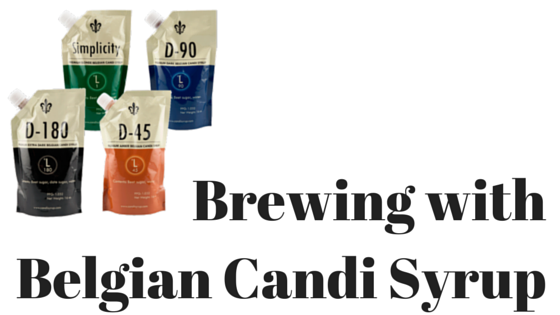


Cold Brewed Beer
Lots of folks cold brew their coffee for an amazingly smooth cup. A day or two before brewing your beer, put the specialty grains in the grain bag and allow them to steep either at room temperature or cold, in the fridge. Surprisingly, the color, aroma and flavor will be “Cold Extracted” and ready for the boil. The “cold brew” does not leach out any of the tannins that cause a harsh character in your brew. Remember, that this only works with specialty grains, which are grains that do not need to be mashed, such as any Crystal/Caramel malts and dark roasted malts. In case of doubt, ASK!
One of the fun and interesting things about home brewing is that you can try different techniques and put them to use where they benefit your brew the most. Take your brewing from “pretty good” to “AWESOME!!”
All Brew Cat Ingredient Kits with extract and specialty grains are available for you in all-grain version. If you’d like your all-grain brew kit made up and waiting for you when you arrive, send us an email or order your kit online and select in-store pick-up. Continue reading below to find out how you can upgrade your system from extract to all-grain for $15!
Enjoy Your Home Brewing Just a Little More!
Check out our expanding Brew Cat Ingredient Kit selection. The Ballast Point Brewing Sculpin IPA Clone is in process. Additional instructions for making the Grapefruit Sculpin!
I made award-winning wine with a kit
You’ll also be both honored and humbled!
Got sediment in your wine bottles?!
How many times should I rack my wine? What can I do about this sediment in my bottles? How do I sweeten my wine?
Being a winemaker is a lesson in patience. You will add your additives and wait 24 hours  before adding the yeast. Then you sprinkle the yeast and wait 5-7 days before racking it and leaving sediment behind. Then you wait 4-6 weeks for the wine to clear up and you rack it (and again, leave that dirty sediment behind). Side note: don’t forget to use Potassium Metabisulfite or Campden Tablets when racking! Keeps everything sanitary.
before adding the yeast. Then you sprinkle the yeast and wait 5-7 days before racking it and leaving sediment behind. Then you wait 4-6 weeks for the wine to clear up and you rack it (and again, leave that dirty sediment behind). Side note: don’t forget to use Potassium Metabisulfite or Campden Tablets when racking! Keeps everything sanitary.
If you want to learn about clarifying your wine, click here for our blog post on that.
So, there’s quite a bit of waiting. Never ever rush! I get quite a few phone calls during winemaking season asking me how to get sediment out of bottles and if it’s safe to put it back into a fermenter. We love our customers and we want you to make the BEST wine you can possibly make. We always talk about how we want you to be able to wow your friends — and yourselves — with how clear and delicious your wine is.
So… Can I put it back into the fermenter and rack or filter it again? Please do not do this because there is a likelihood that this will oxidize the wine. Oxidized wine is not clear OR delicious, friends! The best thing to do is to remember for next time: Use potassium metabisulfite when racking EACH time and rack until you have no more sediment and your wine is clear — no floating particles. If you have sediment floating around in your wine, you can add bentonite or another clarifier. Bentonite is great because it not only latches onto the particles, but also can remove off-aromas. AND now it’s time to wait for that to do its work and settle out.
And yes, filtering will take out particles, but it is not an alternative to racking properly.

And what if I want to sweeten my wine once it’s completed fermentation and I’ve clarified my wine? We have a blog post for that! Click here to read up on sweetening your wine.
Winemaker’s Corner: Degassing and Sweetening Your Wine
The 4 and 6 week wine ingredient kits make really tasty wines- easily and economically! What’s not to love about that! Good news: With an extra step or two, your wines can go from really good to great! Even in Home Wine Competitions.
Wine Making Tip #1 - While the wine ferments, carbon dioxide bubbles up through the wine and slightly carbonates it. While some wines do well with a little carbonation, others such as big red wines and many white wines should never have carbonation. As the freshly fermented wine sits in the secondary fermentor, the carbon dioxide will naturally bleed off. You will see a bit of activity in the airlock with a bubble coming through every few minutes or more. If you leave the freshly fermented wine set in the secondary for several months, much of the carbonation naturally goes away.
You can speed this process up by briskly agitating the wine with a long handled paddle or a long handled spoon. To speed this process up (and save your arm!) the Wine Degasser Whip is an odd shaped nylon rod that fits on your power drill. When you whip the fresh wine a few times for a few minutes each time, nearly all of the CO2 is driven out, leaving your wine nicely degassed.
Wine Making Tip #2 - Most of the wine ingredient kits are designed to naturally ferment and finish dry. While some folks love their wines bone dry, a slight bit of sweetness and body enhances the character of the wine by adding complexity. In competitions, most of the wines are fermented completely dry. To catch the judges attention in a good way, mix 1/3 to 1/2 of a bottle of Wine Conditioner into 6 gallons of your fresh wine. This will slightly sweeten the wine, bringing out the fruitiness and add a bit of body to the finished wine.
Be sure to taste your wine the next day because you are the most important judge! Start out with just a little (1/3 - 1/2 bottle) Wine Conditioner. You can always add more until it is exactly the way you like. It is best to back-sweeten your wine after clarifying and/or filtering.
Best wishes in your adventures in home wine making!
DanV

